Abstract
The aquatic activity that produces the greatest number of spinal-cord lesions is diving. Persons in the general population at greatest risk are males aged 15 to 19 years. Of the cases identified, 45 percent resulted from diving into a river or stream, 27 percent into swimming pools and 28 percent into lakes, reservoirs or the ocean. Distribution by age differed for the major groups of bodies of water. The incidence of spinal-cord injuries was related to season (spring-summer) and day of the week (weekends). The incidence of injuries was highest in those county areas with the least opportunity for exposure to swimming pools or rivers. Of the injured persons, 60 percent were tetraplegic at hospital admission. The most frequent radiologic finding was wedge fracture. This finding, in the absence of objective evidence that most divers struck the bottom of the water reservoir or a hard object, suggests that hyperventroflexion was the mechanism responsible for injury in most of the cases. Physicians and others should be aware of strategy options for preventing or reducing such injuries.
Full text
PDF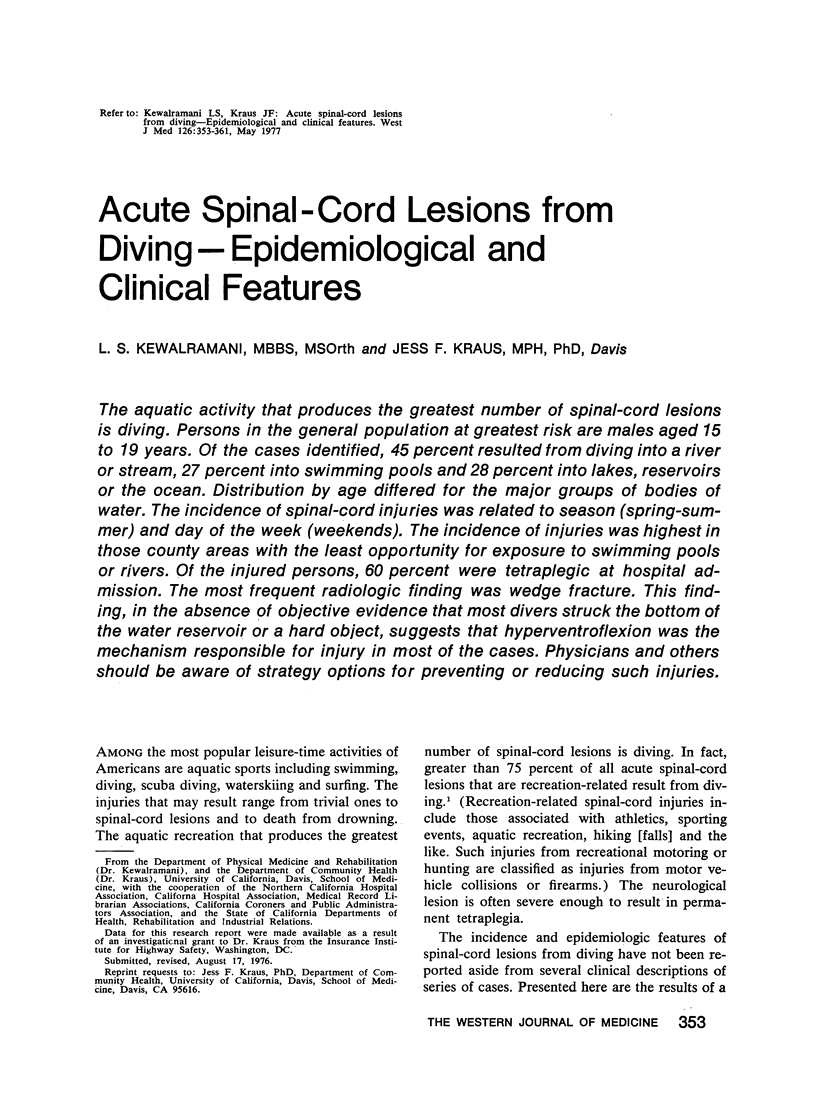
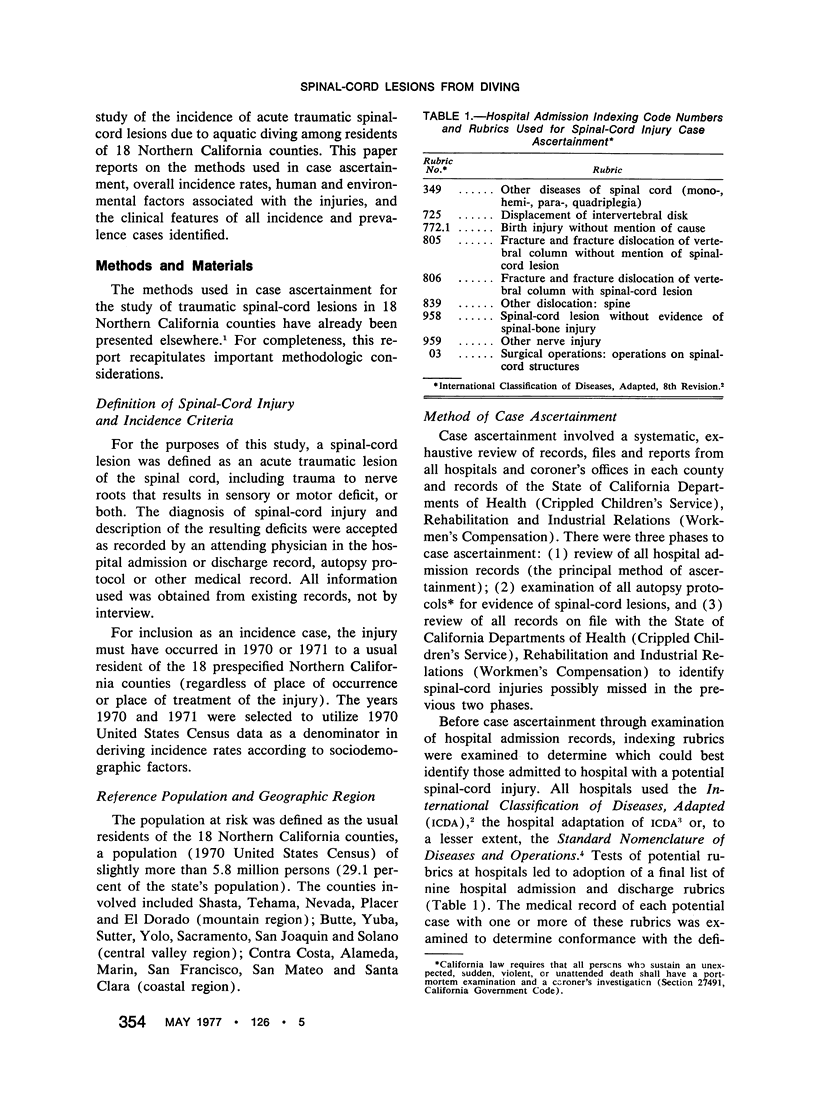
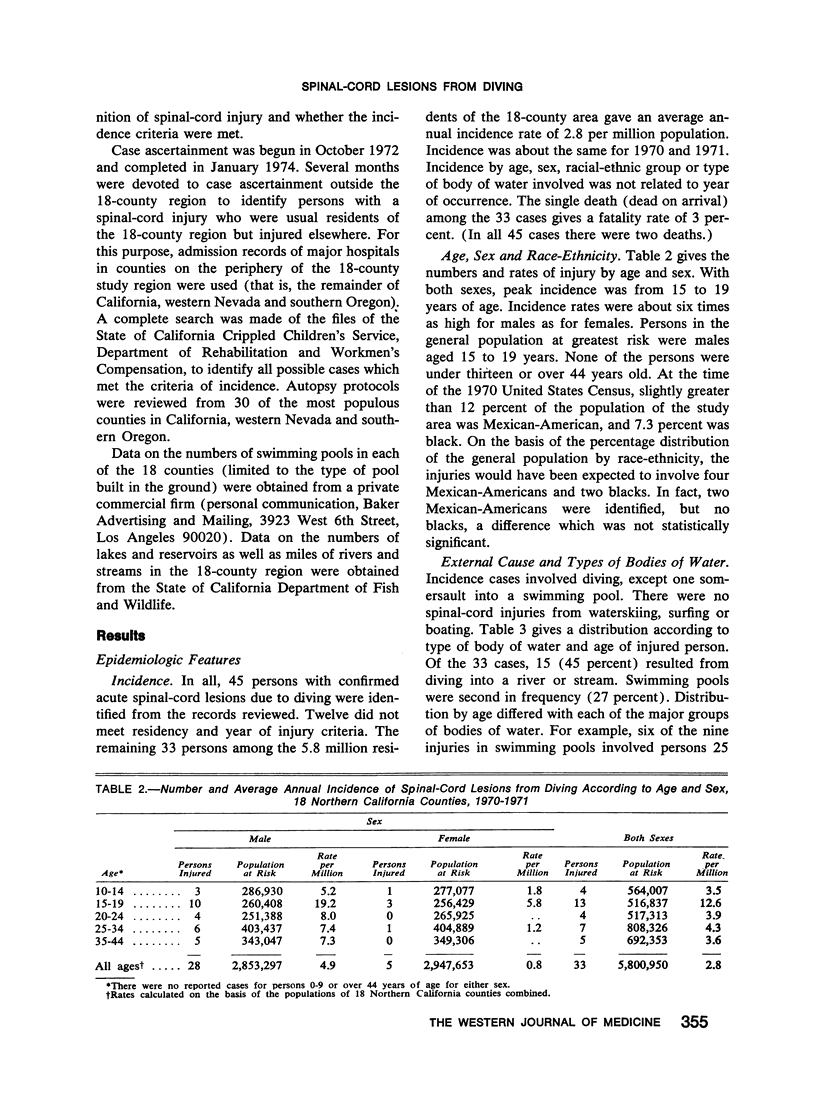
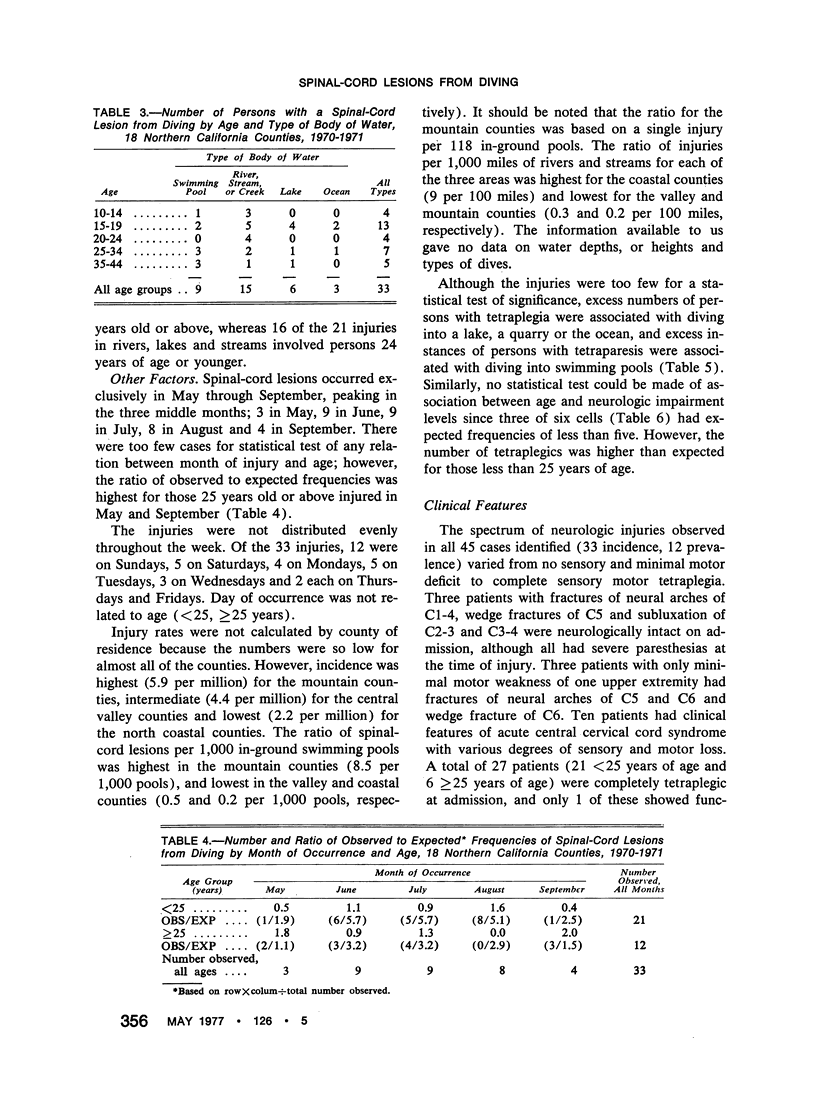
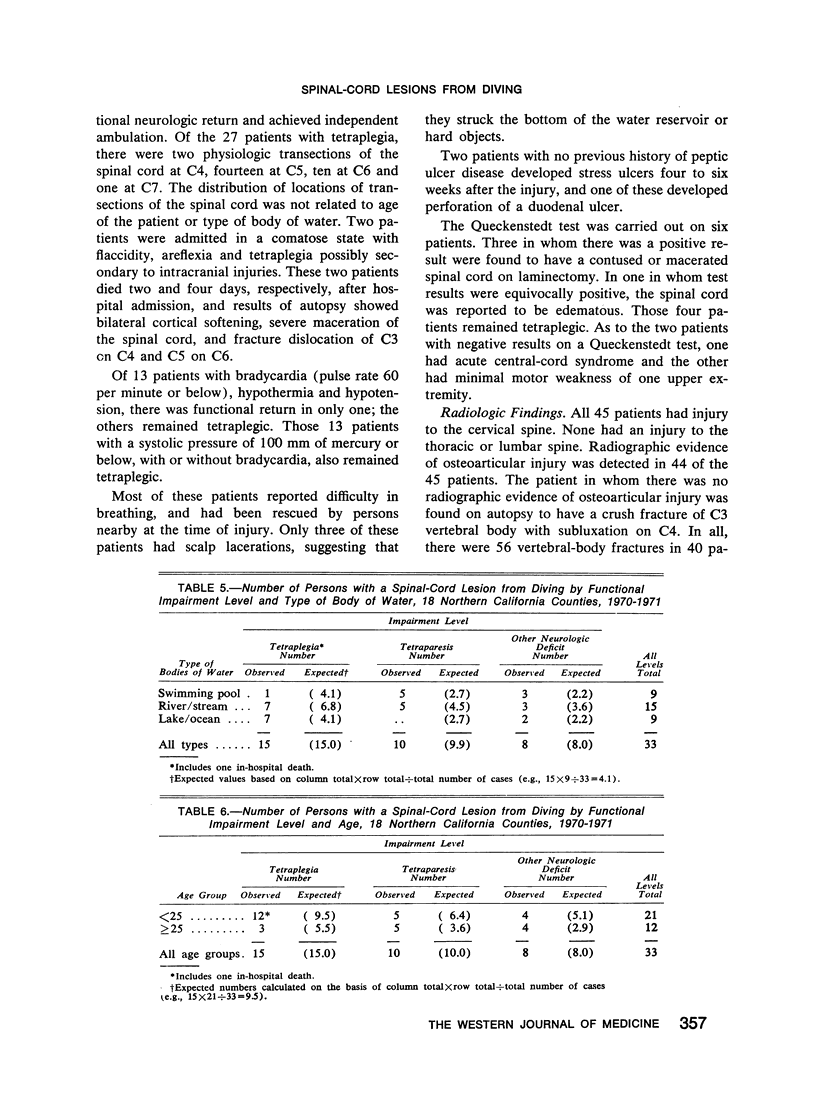
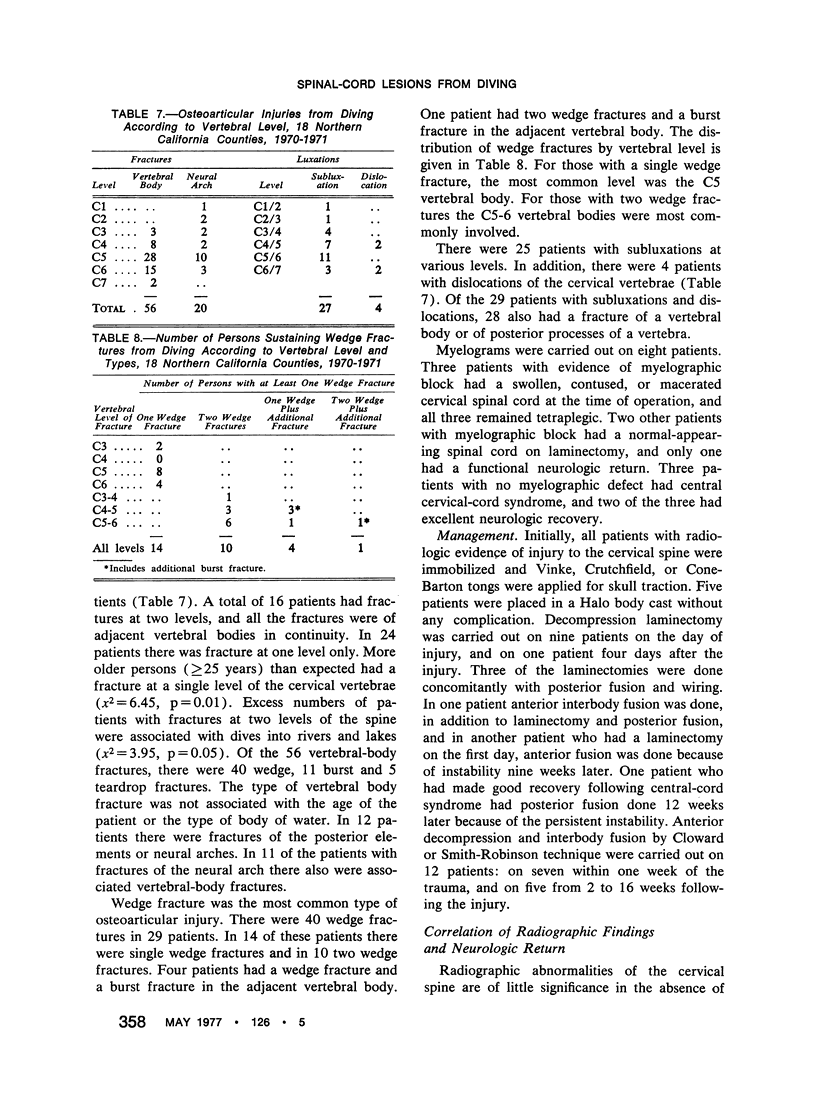
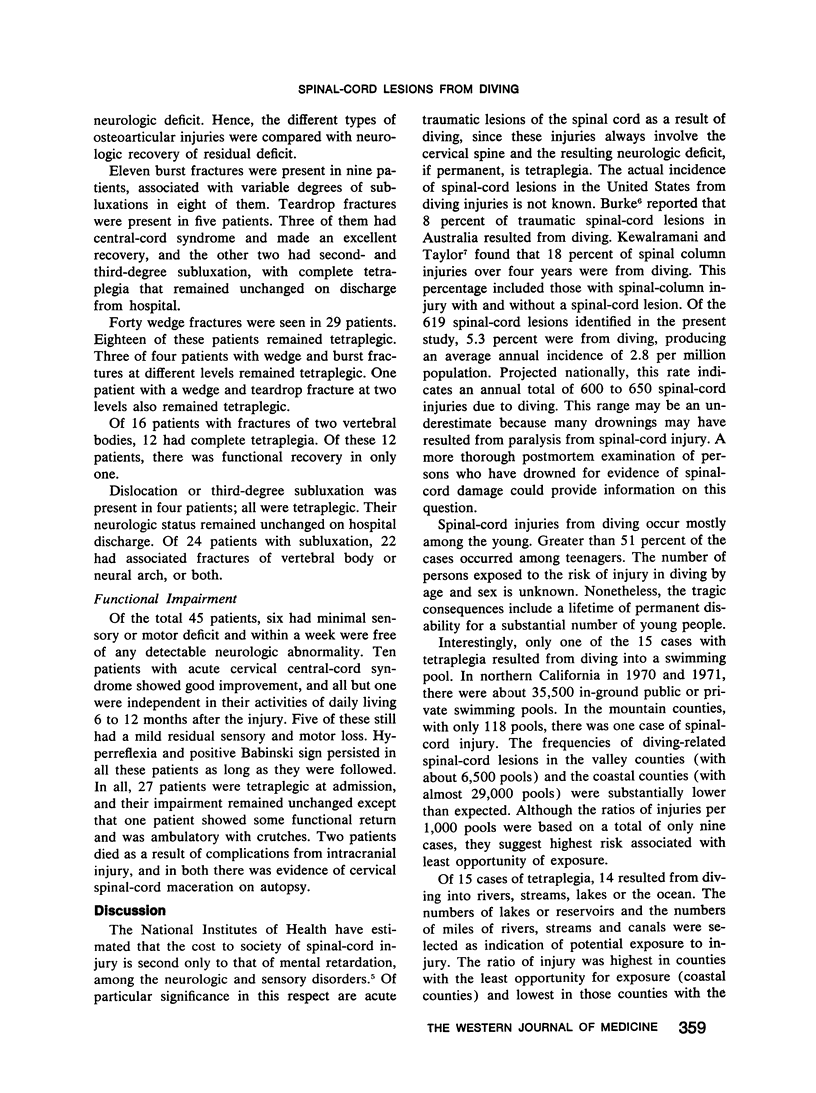
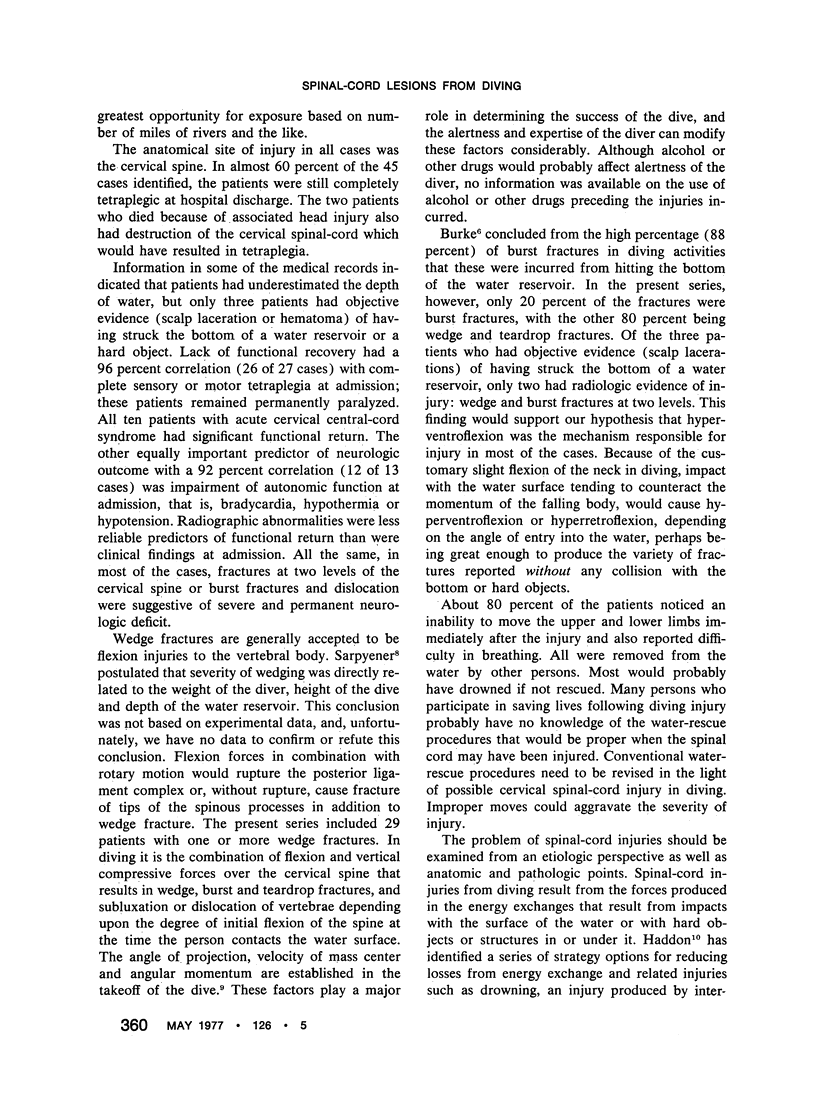
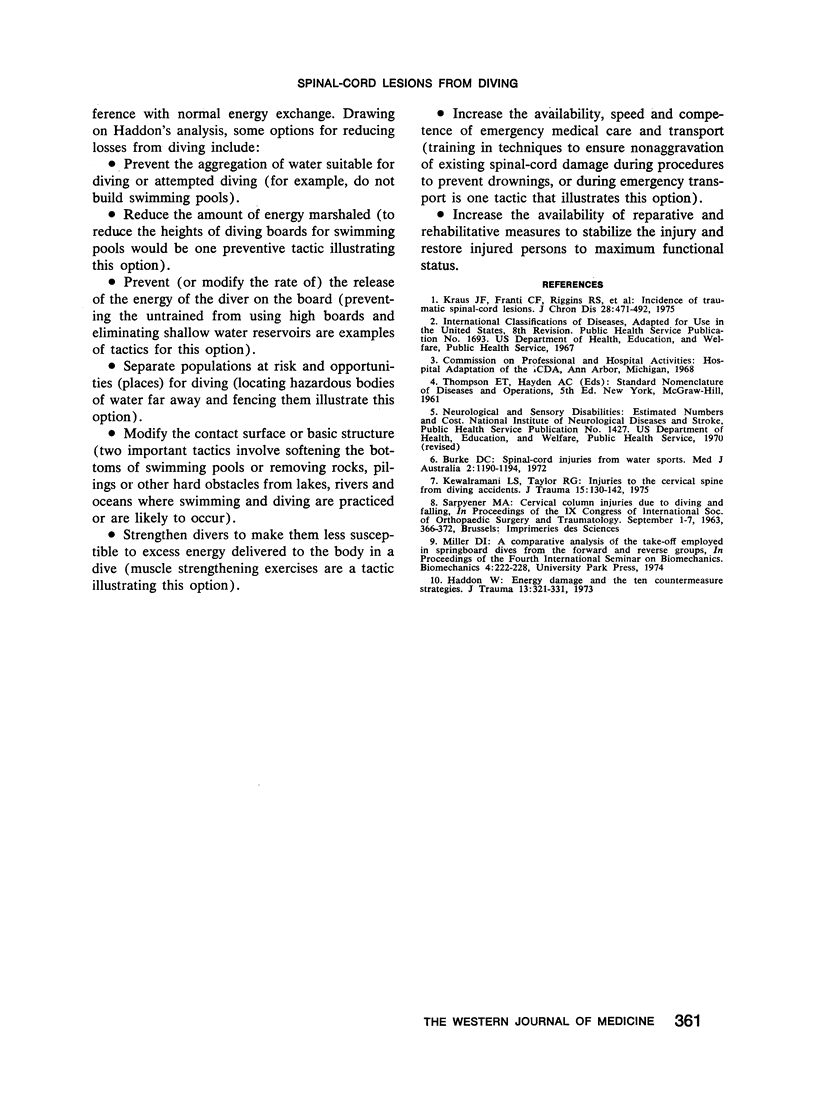
Selected References
These references are in PubMed. This may not be the complete list of references from this article.
- Burke D. C. Spinal cord injuries from water sports. Med J Aust. 1972 Nov 18;2(21):1190–1194. doi: 10.5694/j.1326-5377.1972.tb103797.x. [DOI] [PubMed] [Google Scholar]
- Haddon W., Jr Energy damage and the ten countermeasure strategies. J Trauma. 1973 Apr;13(4):321–331. doi: 10.1097/00005373-197304000-00011. [DOI] [PubMed] [Google Scholar]
- Kewalramani L. S., Orth M. S., Taylor R. G. Injuries to the cervical spine from diving accidents. J Trauma. 1975 Feb;15(2):130–142. doi: 10.1097/00005373-197502000-00005. [DOI] [PubMed] [Google Scholar]
- Kraus J. F., Franti C. E., Riggins R. S., Richards D., Borhani N. O. Incidence of traumatic spinal cord lesions. J Chronic Dis. 1975 Oct;28(9):471–492. doi: 10.1016/0021-9681(75)90057-0. [DOI] [PubMed] [Google Scholar]


